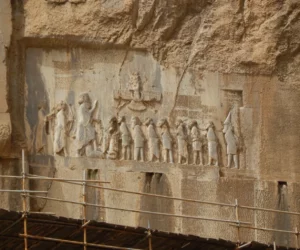The Behistun Inscription: A Historical Rosetta Stone The Behistun Inscription, also known as Bisotun, Bisitun, or Bisutun, is an ancient Achaemenid royal inscription. Located on a cliff at Mount Behistun in Iran’s Kermanshah Province, this monumental work dates back to the reign of Darius the Great (522–486 BC). Renowned for its critical role in deciphering…
Ancient Artifacts
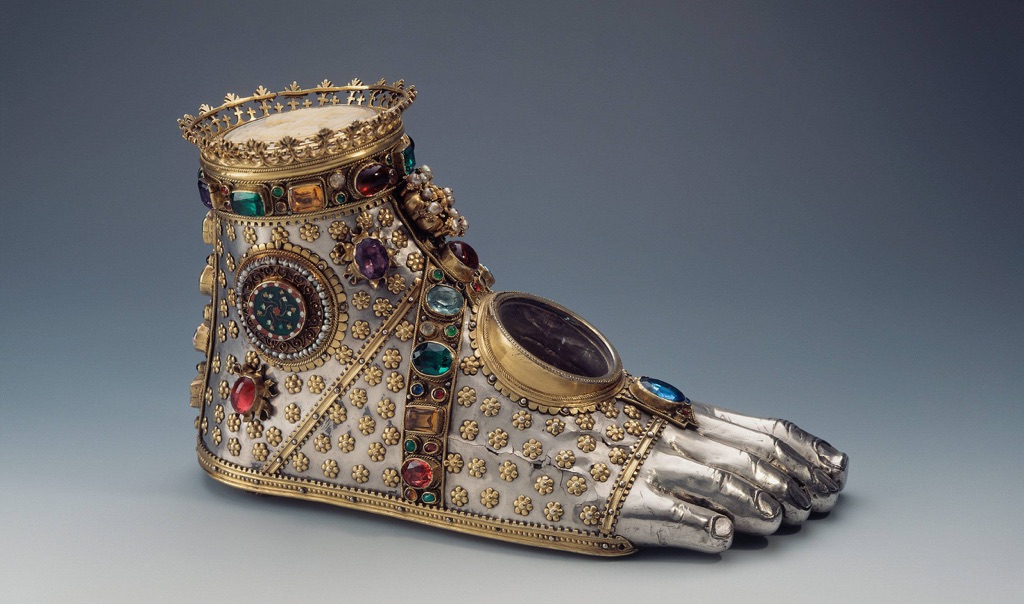
Moving to the East, ancient China artifacts like bronze vessels and oracle bones shed light on the rituals and governance of early Chinese dynasties. These artifacts highlight China’s long history of craftsmanship and written language. Similarly, ancient Egyptian artifacts are world-renowned, particularly for their funerary art, such as the treasures from King Tutankhamun’s tomb. These pieces reflect the Egyptians’ beliefs about death and the afterlife. Artifacts are not just old objects to be displayed in museums; they are keys to unlocking the secrets of human development across the ages. They preserve the ideas and values of people who lived thousands of years before us. Through careful study, they teach us about our collective history and heritage.
Among the most famous ancient artifacts in the world is the Rosetta Stone. Discovered in 1799, this granodiorite stele was the key to understanding Egyptian hieroglyphs—a script made of small pictures that was used originally in ancient Egypt for religious texts. The Rosetta Stone is inscribed with a decree issued at Memphis in 196 BC on behalf of King Ptolemy V. The decree appears in three scripts: the upper text is Ancient Egyptian hieroglyphs, the middle portion Demotic script, and the lower Ancient Greek. Because it presents essentially the same text in all three scripts, it provided the crucial link for scholars to decipher Egyptian hieroglyphs, thereby opening a window into ancient Egyptian history.
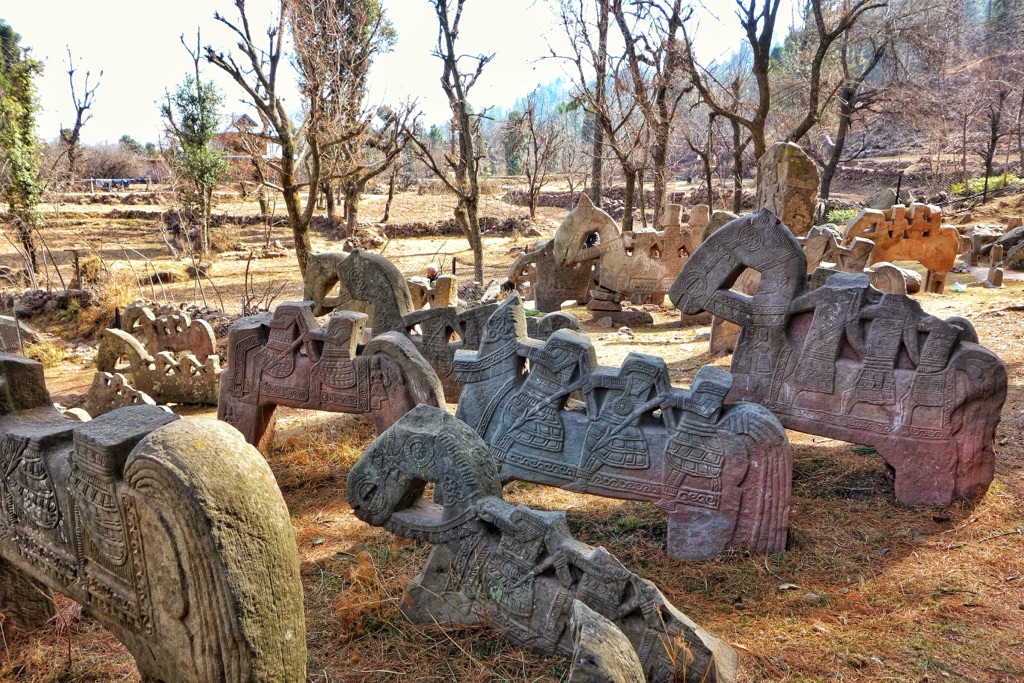
The title of the oldest artifact on earth goes to the stone tools found in Lomekwi 3, Kenya, which date back to 3.3 million years ago. These tools predate the earliest known humans and suggest that tool-making was a part of our pre-human ancestors’ way of life. These ancient tools mark a significant milestone in human evolutionary history, indicating the beginnings of technology and innovation. They are not just simple objects; they represent the dawn of human ingenuity and the very first steps towards the complex societies we have today.
An ancient artifact can be defined as any item made or used by humans in ancient times that has cultural, historical, or archaeological significance. These artifacts can range from monumental structures like the pyramids of Egypt to small, everyday objects like Roman coins. They can include items as diverse as weapons, clothing, and artwork. Each artifact, no matter its size or apparent significance, offers a glimpse into the lives of those who came before us, providing evidence of past behaviors, beliefs, and social structures.
Famous ancient artifacts not only include monumental finds like the Rosetta Stone or the treasures of Tutankhamun’s tomb but also the Terracotta Army of China, the Dead Sea Scrolls, and the Venus of Willendorf. The Terracotta Army, buried with the first Emperor of China, Qin Shi Huang, consists of thousands of life-sized figures meant to protect the emperor in the afterlife. The Dead Sea Scrolls, discovered in a series of caves near the Dead Sea, are ancient Jewish texts that offer invaluable insight into the history of Judaism and the early text of the Bible. The Venus of Willendorf, a small Paleolithic figurine discovered in Austria, dates back to about 28,000 BCE and is thought to represent fertility. Each of these artifacts, in its own way, has reshaped our understanding of human history, offering evidence of the complexity, diversity, and ingenuity of ancient civilizations.
List of Discovered Ancient Artifacts
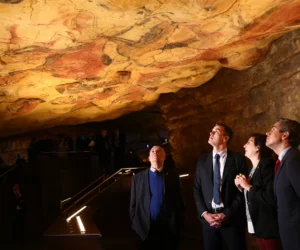
Cave of Altamira
The Mystical Cave of Altamira: A Journey Through Time The Cave of Altamira, located near Santillana del Mar in Cantabria, Spain, offers a breathtaking glimpse into prehistoric art. This cave complex, discovered in 1868, showcases remarkable charcoal drawings and polychrome paintings of local fauna and human hands from the Upper Paleolithic period, around 36,000 years…
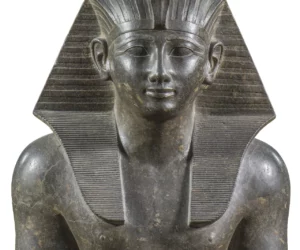
Statue of Tuthmosis III
Statue of Tuthmosis III: A Symbol of Ancient Egyptian Power Tuthmosis III, one of Egypt’s most renowned pharaohs, is immortalized in a grand statue that exudes power and regality. This impressive piece, carved from granodiorite, stands 192 cm tall, 64 cm wide, and 133 cm deep. It dates back to the Eighteenth Dynasty, during the…
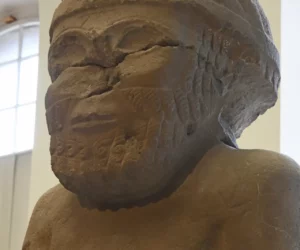
Hadad Statue
The Hadad Statue: A Glimpse into Ancient Sam’al The Hadad Statue is an 8th-century BC stele of King Panamuwa I from the Kingdom of Bit-Gabbari in Sam’al. Currently, it occupies a prominent position in the Vorderasiatisches Museum in Berlin. This statue offers a fascinating window into the life and times of King Panamuwa I and…
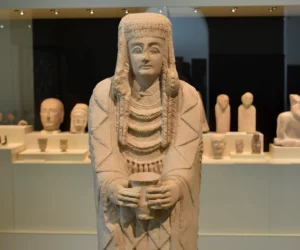
Lady of Cerro de los Santos
The Majestic Lady of Cerro de los Santos The Lady of Cerro de los Santos, also known as the Gran Dama Oferente, is a captivating limestone sculpture unearthed in Spain. This magnificent figure offers a glimpse into the lives and artistry of the ancient Iberians. Discovery and Description In 1870, archaeologists made an extraordinary discovery…
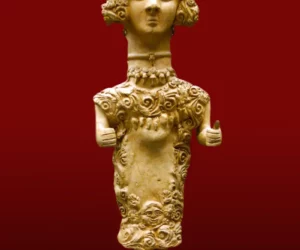
Lady of Ibiza
The Enigmatic Lady of Ibiza This captivating ceramic figure, known as the Lady of Ibiza, stands at 47 cm tall and dates back to the third century BC. Now showcased in the National Archaeological Museum of Spain in Madrid, this intriguing artifact offers a glimpse into the artistic and cultural life of the ancient Mediterranean…

